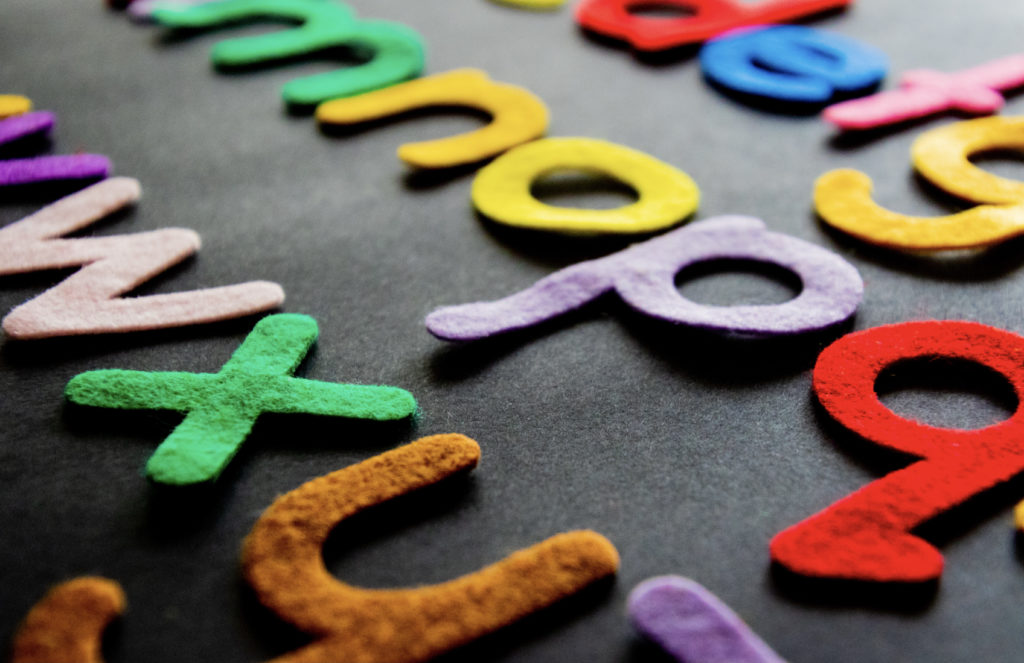The Importance of Strong Reading Comprehension
In my years of teaching, I have found the students who struggle with reading comprehension, but who have mastered other elements of reading such as decoding and fluency, to be some of the more rewarding to assist. In the book I Read It, But I Don’t Get It, Cris Tovani (2000) calls these readers “word callers” due to their focus on reading individual words and not the bigger picture of a text. Because their oral reading is strong, they often get lost in the shuffle or are assumed to be “solid” readers. The truth is, this demonstrates a much too narrow idea of what it means to read. Reading is so much more than the words on the page, and many who enjoy reading talk about the ability of a text to transport them to another world. This highlights the depths that strong reading comprehension can take us to.
Common Language for Reading Comprehension
Much like developing a base for discussing decoding and fluency with students, establishing a common language for reading comprehension is of great importance. Many teachers focus on the six active reading strategies: Visualize; Clarify; Question; Predict; Connect; Evaluate. I’ve even heard the catchy mnemonic device, “Vicky called Queen Penelope cute and energetic” used to jog students’ memories.
Visualizing challenges students to paint a mental picture or movie of what they are reading. Similarly, when students are clarifying what they have read, they pause to check their comprehension by summarizing and re-reading if necessary. Questioning is a bit more open-ended as students might question their own comprehension, or they might engage with the text by asking questions about the author’s purpose or a character’s motivation. I find that predicting often comes most easily to students. They are primed from their earliest experiences with reading to consider what might happen next. When students are connecting with the text, they relate what they have read to their own experiences, another text, a class, a movie, etc. The last strategy, evaluating, is often challenging for students because it requires that they develop an opinion about the text’s characters or events, or, on a deeper level, the tone or theme.
While each of these strategies serves a purpose in helping students deepen their comprehension, none is effective without proper explanation and practice. Students also need direct instruction in recognizing where their comprehension breaks down. Initially this metacognitive exercise may feel like a game of whack-a-mole: teaching students to notice gaps in comprehension and work to fill them in. However, teaching students to stop when understanding breaks down builds a strong base for dissecting text on the initial read, which leaves these gaps in comprehension smaller and fewer and farther between. I believe one of the best ways to support students in this process is by zooming in on the strategy of visualizing. Additionally, the task of visualizing, or creating what David Kilpatrick calls a “situational model” (2015), requires the integration of many cognitive and language-based skills. As students begin to integrate “background knowledge, experience, and vocabulary” (Kilpatrick, 2012), the demands on working memory decrease. It is, for this reason, that time spent building a student’s ability to create a mental picture is time well spent.
For students who struggle with reading comprehension, visualizing should develop from the image level, – that is, without reading words on a page. The goal of this is to build the process and skill without overtaking students by adding reading. Eventually, through the removal of scaffolding, students will independently employ the strategy of visualizing while reading to enhance comprehension. This process begins by prompting the student to describe a provided image. Initial answers will likely be brief, and the use of cueing and prompting will be of the utmost importance to begin modeling how a student might describe what they see. It is also important to note that teachers should not tell a student that they are wrong, but should rather steer them to a more accurate response through the use of cueing strategies. From there, a teacher can provide a student with a single word to visualize. Here they may work with pairs of words to elicit the student to consider the subtleties of language. For instance, a student might first think about someone who is happy and then see the shift when that student is described as ecstatic. A deeper level of questioning might prompt a student to consider what would make someone happy versus what might make them ecstatic. These kinds of questions can challenge a student to begin to look at the larger language of a text, which they will move towards as the focus shifts from the sentence and to the paragraph level. Finally, a student will begin to visualize full passages as they read, all the while watching the movie in their head.
One of the strongest benefits of focusing on visualization without reading text as a reading comprehension strategy is that it bridges the gap to critical reading. It opens the door for rich conversations with students about not only what they visualize, but also why. In doing so, they have a chance to examine the background knowledge and bias that they bring to reading (Park, 2012). Teachers who prepare students to interact with text on this level will move students towards independence in reading comprehension as well as help to develop deeper thinkers and accurate critical thinkers.
References
- Kilpatrick, D. A. (2015). Essentials of assessing, preventing, and overcoming reading difficulties. Wiley.
- Park, J. Y. (2012). A different kind of reading instruction: Using visualizing to bridge reading comprehension and critical literacy. Journal of Adolescent & Adult Literacy, 55(7), 629–640. https://doi.org/10.1002/jaal.00074
- Tovani, C. (2000). I read it, but I don’t get it: Comprehension strategies for adolescent readers. Stenhouse Publishers.



